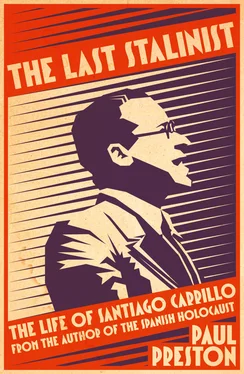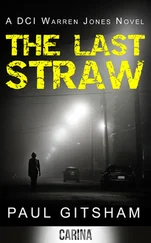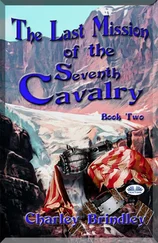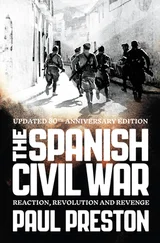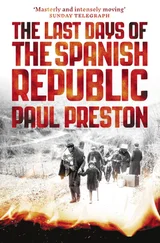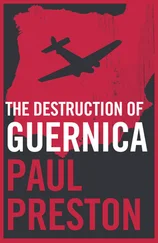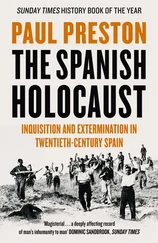It is clear that Miaja, Rojo, Gorev and the senior leadership of the Communist Party were all anxious to see the prisoner question resolved with the greatest urgency. There is no doubt that Miaja and Rojo approved of prisoner evacuations although not necessarily of executions. What is likely is that, in the meetings immediately following the creation of the Junta de Defensa, they delegated responsibility to the two-man leadership of the PCE. Checa and Mije, who, like the Russians, certainly did approve of the execution of prisoners, passed organizational responsibility to Carrillo, Cazorla and Serrano Poncela. To implement their instructions, the trio drew on members of the JSU who were given posts in the Public Order Delegation headed by Serrano Poncela, effectively head of the Dirección General de Seguridad for Madrid. They could also count on assistance from Contreras/Vidali and the Fifth Regiment and from Grigulevich and the brigada especial . However, they could do nothing against the will of the anarchist movement, which controlled the roads out of Madrid. Given that the anarchists had already seized and murdered prisoners, it was not likely that they would offer insuperable opposition to the Communists. Indeed, the formal agreement of senior elements of the CNT militias was soon forthcoming.
The inaugural session of the Junta began at 6.00 p.m. on 7 November. 93Before the meeting, at around 5.30 p.m., Carrillo, coming out of Miaja’s office in the Ministry of War, met a representative of the International Red Cross, Dr Georges Henny, with Felix Schlayer, the Norwegian Consul. Carrillo invited them to meet him in his office immediately after the plenary session. Before returning for that meeting, Schlayer and the Red Cross delegate went to the Cárcel Modelo where they learned that several hundred prisoners had been taken away earlier that day. On coming back to the Ministry of War, they were greeted amiably by Carrillo, who assured them of his determination to protect the prisoners and prevent any murders. When they told him what they had learned at the Cárcel Modelo, he denied knowledge of any evacuations. Schlayer reflected later that, even if this were true, it raises the question as to why Carrillo and Miaja, once having been informed by him of the evacuations, did nothing to prevent the others that continued that evening and on successive days. 94
Later the same evening, a meeting took place between, on the one hand, two or three representatives of the JSU who controlled the newly created Public Order Council and members of the local federation of the CNT. They discussed what to do with the prisoners. Despite mutual hostility, liaison between both organizations was necessary, since the Communists held sway inside Madrid, controlling the police, the prisons and the files on prisoners, while the anarchists, through their militias, controlled the roads out of the city. The only record of the meeting is constituted by the minutes of a session of the CNT’s National Committee held the next morning. Those minutes include a report by Amor Nuño Pérez, the Councillor for War Industries in the Junta de Defensa, who had been one of the CNT representatives at the previous evening’s negotiation with the JSU. Amor Nuño’s report outlined what had been agreed at that encounter with the JSU. The minutes did not include the names of the other participants at the CNT–JSU meeting. However, it is reasonable to suppose that the JSU representatives included at least two of the following: Carrillo, Cazorla and Serrano Poncela. The gravity of the matter under discussion and the practical agreements reached could hardly have permitted the Public Order Council to be represented by more junior members of the JSU. If Carrillo was not there, which is unlikely, it is inconceivable that he, as both Public Order Councillor and secretary general of the JSU, was not fully apprised of the meeting.
Nuño reported that the CNT and JSU representatives, on the evening of 7 November, had decided that the prisoners should be classified into three groups. The fate of the first, consisting of ‘fascists and dangerous elements’, was to be ‘Immediate execution’ ‘with responsibility to be hidden’ – the responsibility being that of those who took the decision and of those who implemented it. The second group, of prisoners considered to be supporters of the military uprising but, because of age or profession, less dangerous, were to be evacuated to Chinchilla, near Albacete. The third, those least politically committed, were to be released ‘with all possible guarantees, as proof to the Embassies of our humanitarianism’. This last comment suggests that whoever represented the JSU at the meeting knew about and had mentioned the earlier encounter between Carrillo and Schlayer. 95
The first consignment of prisoners had already left Madrid early in the morning of 7 November, presumably in accordance with the instructions for evacuation issued by Pedro Checa in response to Koltsov/Miguel Martínez. Thus some prisoners were removed and killed before the formal agreement with the CNT made later that evening. There is no record of there being any difficulty about their getting through the anarchist militias on the roads out of the capital. That is not surprising since there were CNT–FAI representatives on Serrano Poncela’s Public Order Delegation. Nevertheless, the agreement guaranteed that further convoys would face no problems at the anarchist checkpoints and that they could also rely on substantial assistance in the gory business of executing the prisoners. The strongest CNT controls were posted on the roads out to Valencia and Aragon which the convoys would take. The necessary flotillas of double-decker buses and many smaller vehicles could not get out of Madrid without the approval, cooperation or connivance of the CNT patrols. Since Carrillo, Cazorla and Serrano Poncela knew this only too well, it is not plausible that they would have ordered evacuation convoys without first securing the agreement of the CNT–FAI. This undermines Carrillo’s later assertions that the convoys were hijacked by anarchists. The grain of truth in those claims resides in the certainty that the anarchists took some part in the actual killing.
The first decisions taken by Carrillo and his collaborators had been the saca on the morning of 7 November at San Antón and, in the afternoon, the larger one at the Cárcel Modelo. The prisoners were loaded on to double-decker buses. Convoys consisting of the buses escorted by cars and trucks carrying militiamen shuttled back and forth over the next two days. Their official destinations were prisons well behind the lines, in Alcalá de Henares, Chinchilla and Valencia. However, of the more than 1,000 prisoners removed, only about 300 arrived there. Eleven miles from Madrid, on the road to Alcalá de Henares, at the small village of Paracuellos del Jarama, the first batch, from San Antón, were forced off the buses. At the base of the small hill on which the village stood, they were lined up by the militiamen, verbally abused and then shot. In the evening of the same day, the second batch, from the Cárcel Modelo, suffered the same fate. 96A further consignment of prisoners arrived on the morning of 8 November. The mayor was forced to round up the able-bodied inhabitants of the village (there were only 1,600 in total) to dig huge ditches for the approximately 800 bodies which had been left to rot. When Paracuellos could cope with no more, subsequent convoys made for the nearby village of Torrejón de Ardoz, where a disused irrigation channel was used for the approximately 400 victims. 97 Sacas continued, with intervals, until 3 December. Some expeditions of prisoners arrived safely in Alcalá de Henares. The total numbers killed over the four weeks following the creation of the Junta de Defensa cannot be calculated with total precision, but there is little doubt that it was somewhere between 2,200 and 2,500. 98
Читать дальше
